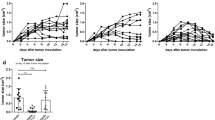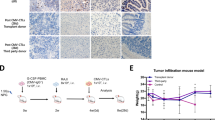Abstract
Preclinical research in murine models as well as subsequent clinical trials have concordantly revealed a high protective potential of antiviral CD8 T cells, of donor-derived ex vivo memory CD8 T cells in particular, in the immunotherapy of cytomegalovirus (CMV) infection in immunocompromised recipients. Although it is generally held view that the observed beneficial effect of the transferred cells is viral epitope-specific, involving the recognition of MHC class-I presented peptides by cognate T cell receptors, this assumption awaits formal proof, at least with regard to the in vivo function of the CD8 T cells. This question is particularly evident for CMV, since the function of viral immune evasion proteins interferes with the MHC class-I pathway of peptide presentation. Alternatively, therefore, one has to consider the possibility that the requirement for epitope recognition may be bypassed by other ligand–receptor interactions between CD8 T cells and infected cells, which may trigger the signaling for effector functions. Clearly, such a mechanism might explain why CD8 T cells are so efficient in controlling CMV infection despite the expression of viral immune evasion proteins. Here we provide direct evidence for epitope-specificity of antiviral protection by employing a recombinant murine CMV (mCMV), namely the mutant virus mCMV-IE1-L176A, in which an immunodominant viral epitope of the regulatory immediate-early protein IE1 is functionally deleted by a point mutation replacing leucine with alanine at the C-terminal MHC anchor position of the antigenic peptide.







Similar content being viewed by others
References
Pahl-Seibert MF, Jülch M, Podlech J, Thomas D, Deegen P, Reddehase MJ, Holtappels R (2005) Highly protective in vivo function of cytomegalovirus IE1 epitope-specific memory CD8 T cells purified by T-cell receptor-based cell sorting. J Virol 79:5400–5413
Steffens HP, Kurz S, Holtappels R, Reddehase MJ (1998) Preemptive CD8 T-cell immunotherapy of acute cytomegalovirus infection prevents lethal disease, limits the burden of latent viral genomes, and reduces the risk of virus recurrence. J Virol 72:1797–1804
Riddell SR, Watanabe KS, Goodrich JM, Li CR, Agha ME, Greenberg PD (1992) Restoration of viral immunity in immunodeficient humans by the adoptive transfer of T cell clones. Science 257:238–241
Cobbold M, Khan N, Pourgheysari B, Tauro S, McDonald C, Osman H, Assenmacher M, Billingham L, Steward C, Crawley C, Olavarria E, Goldman J, Chakraverty R, Mahendra P, Craddock C, Moss PA (2005) Adoptive transfer of cytomegalovirus-specific CTL to stem cell transplant patients after selection by HLA-peptide tetramers. J Exp Med 202:379–386
Reddehase MJ (2002) Antigens and immunoevasins: opponents in cytomegalovirus immune surveillance. Nat Rev Immunol 2:831–844
Pinto AK, Munks MW, Koszinowski UH, Hill AB (2006) Coordinated function of murine cytomegalovirus genes completely inhibits CTL lysis. J Immunol 177:3225–3234
Holtappels R, Gillert-Marien D, Thomas D, Podlech J, Deegen P, Herter S, Oehrlein-Karpi SA, Strand D, Wagner M, Reddehase MJ (2006) Cytomegalovirus encodes a positive regulator of antigen presentation. J Virol 80:7613–7624
Holtappels R, Grzimek NK, Simon CO, Thomas D, Dreis D, Reddehase MJ (2002) Processing and presentation of murine cytomegalovirus pORFm164-derived peptide in fibroblasts in the face of all viral immunosubversive early gene functions. J Virol 76:6044–6053
Gold MC, Munks MW, Wagner M, McMahon CW, Kelly A, Kavanagh DG, Slifka MK, Koszinowski UH, Raulet DH, Hill AB (2004) Murine cytomegalovirus interference with antigen presentation has little effect on the size or the effector memory phenotype of the CD8 T cell response. J Immunol 172:6944–6953
Holtappels R, Munks WM, Podlech J, Reddehase MJ (2006) CD8 T-cell-based immunotherapy of cytomegalovirus disease in the mouse model of the immunocompromised bone marrow transplantation recipient. In: Reddehase MJ (ed) Cytomegaloviruses: molecular biology and immunology. Caister Academic Press, Norfolk, pp 383–418
Jonjic S, Bubic I, Krmpotic A (2006) Innate immunity to cytomegaloviruses. In: Reddehase MJ (ed) Cytomegaloviruses: molecular biology and immunology. Caister Academic Press, Norfolk, pp 285–320
Reddehase MJ, Keil GM, Koszinowski UH (1984) The cytolytic T lymphocyte response to the murine cytomegalovirus. II. Detection of virus replication stage-specific antigens by separate populations of in vivo active cytolytic T lymphocyte precursors. Eur J Immunol 14:56–61
Streblow DN, Varnum SM, Smith RD, Nelson JA (2006) A proteomics analysis of human cytomegalovirus particles. In: Reddehase MJ (ed) Cytomegaloviruses: molecular biology and immunology. Caister Academic Press, Norfolk, pp 91–110
Shenk T (2006) Human cytomegalovirus genomics. In: Reddehase MJ (ed) Cytomegaloviruses: molecular biology and immunology. Caister Academic Press, Norfolk, pp 49–62
Boehme KW, Compton T (2006) Virus entry and activation of innate immunity. In: Reddehase MJ (ed) Cytomegaloviruses: molecular biology and immunology. Caister Academic Press, Norfolk, pp 111–130
Hengel H, Brune W, Koszinowski UH (1998) Immune evasion by cytomegalovirus—survival strategies of a highly adapted opportunist. Trends Microbiol 6:190–197
Reddehase MJ, Simon CO, Podlech J, Holtappels R (2004) Stalemating a clever opportunist: lessons from murine cytomegalovirus. Hum Immunol 65:446–455
Lodoen M, Ogasawara K, Hamerman JA, Arase H, Houchins JP, Mocarski ES, Lanier LL (2003) NKG2D-mediated natural killer cell protection against cytomegalovirus is impaired by viral gp40 modulation of retinoic acid early inducible 1 gene molecules. J Exp Med 197:1245–1253
Pinto AK, Jamieson AM, Raulet DH, Hill AB (2007) The role of NKG2D signaling in inhibition of cytotoxic T-lymphocyte lysis by the murine cytomegalovirus immunoevasin m152/gp40. J Virol 81:12564–12571
Vivier E, Tomasello E, Paul P (2002) Lymphocyte activation via NKG2D: towards a new paradigm in immune recognition? Curr Opin Immunol 14:306–311
Simon CO, Holtappels R, Tervo HM, Böhm V, Däubner T, Oehrlein-Karpi SA, Kühnapfel B, Renzaho A, Strand D, Podlech J, Reddehase MJ, Grzimek NK (2006) CD8 T cells control cytomegalovirus latency by epitope-specific sensing of transcriptional reactivation. J Virol 80:10436–10456
Simon CO, Seckert CK, Grzimek NK, Reddehase MJ (2006) Murine model of cytomegalovirus latency and reactivation: the silencing/desilencing and immune sensing hypothesis. In: Reddehase MJ (ed) Cytomegaloviruses: molecular biology and immunology. Caister Academic Press, Norfolk, pp 483–500
Hemmer B, Vergelli M, Pinilla C, Houghten R, Martin R (1998) Probing degeneracy in T-cell recognition using peptide combinatorial libraries. Immunol Today 19:163–168
Eisen HN (2001) Specificity and degeneracy in antigen recognition: yin and yang in the immune system. Annu Rev Immunol 19:1–21
Mazza C, Malissen B (2007) What guides MHC-restricted TCR-recognition? Semin Immunol 19:225–235
Cohn M (2008) An in depth analysis of the concept of “polyspecificity” assumed to characterize TCR/BCR recognition. Immunol Res 40:128–147
Reddehase MJ, Koszinowski UH (1991) Redistribution of critical major histocompatibility complex and T cell receptor-binding functions of residues in an antigenic sequence after biterminal substitution. Eur J Immunol 21:1697–1701
Hokeness KL, Deweerd ES, Munks MW, Lewis CA, Gladue RP, Salazar-Mather TP (2007) CXCR3-dependent recruitment of antigen-specific T-lymphocytes to the liver during murine cytomegalovirus infection. J Virol 81:1241–1250
Acknowledgments
We greatly appreciated the help by Markus Jülch (Tumor Vaccination Centre at the III. Medical Clinic, University Clinic Mainz) for help with the cell sorting. This work was supported by the Deutsche Forschungsgemeinschaft, SFB 490, individual projects E2 (N.K.A.G. and M.J.R.), E3 (R.H., D.T., P.D., M-F.P-S.), and E4 (V.B., S.A.O-K., and M.J.R.); SFB 432, individual project A10 (J.P.) and clinical research group KFO 183 (N.A.W.L. and M.J.R.). Special thanks go to the “Dr. Gerhard und Martha Röttger-Stiftung” for a generous donation.
Author information
Authors and Affiliations
Corresponding author
Rights and permissions
About this article
Cite this article
Böhm, V., Podlech, J., Thomas, D. et al. Epitope-specific in vivo protection against cytomegalovirus disease by CD8 T cells in the murine model of preemptive immunotherapy. Med Microbiol Immunol 197, 135–144 (2008). https://doi.org/10.1007/s00430-008-0092-3
Received:
Published:
Issue Date:
DOI: https://doi.org/10.1007/s00430-008-0092-3




